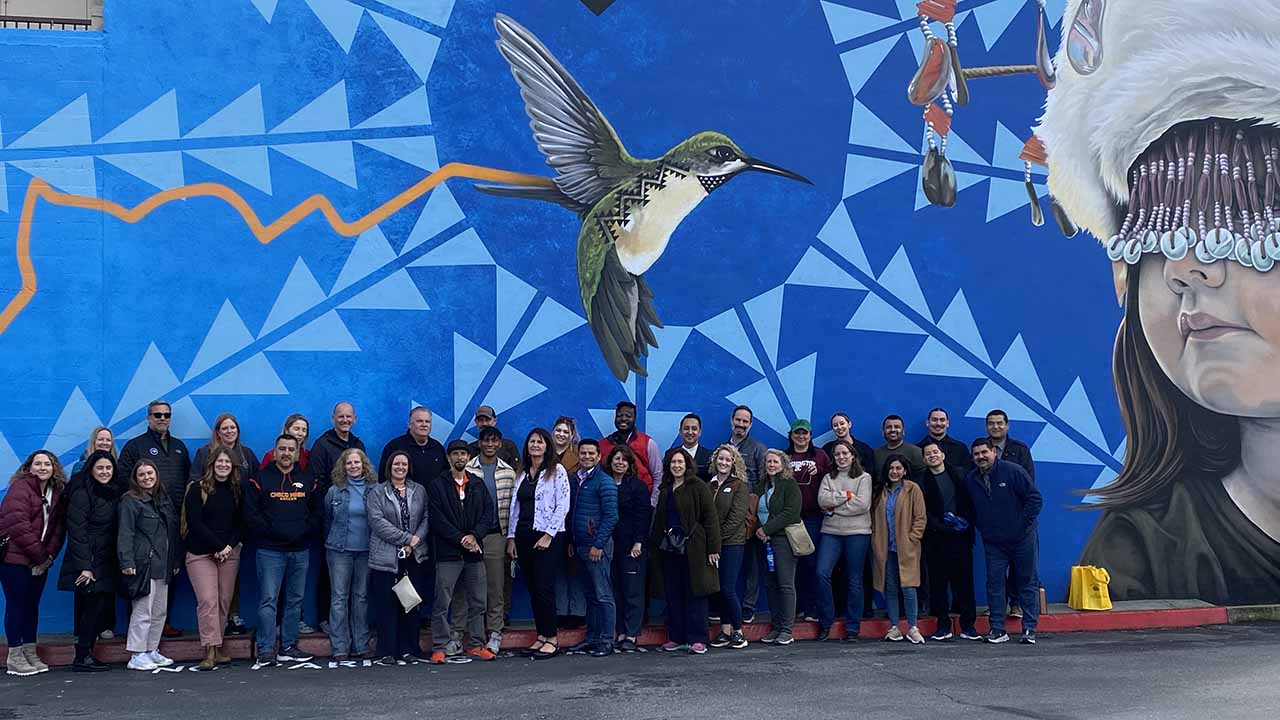
California Stewardship Network Exchange attendees in front of a Redding, California mural created to honor local Indigenous peoples and the traditional place name of the area, Elpom. (All photos: Davíd Loeza/CA FWD)
As attendees to CA FWD’s annual California Stewardship Network (CSN) Exchange in Redding this week viewed a large downtown mural created by Indigenous artists, speaker Jonathon Freeman of the Native Roots Network, noted the art installation represented “bringing Indigenous core values into defining what revitalization looks like.”
Dozens of regional leaders in the CSN and CA FWD’s Morgan Fellowship program and Young Leaders Advisory Council came together this week to get a valuable, up-close look at not only the mural but also innovations in a region that doesn’t often receive the attention of California’s more urban areas: the North State.
The Network met for its annual Exchange event Monday and Tuesday to set priorities for action, learn from each other’s experiences in problem-solving and hear about local solutions like 3D printed houses, integrating arts and culture into a downtown and conservation efforts on tribal lands in the area. Attendees also toured the city for an on-the-ground look at one-of-a-kind programs and achievements.
“It was very cool to have fellow CSN members from all over the state in attendance, personally experiencing the beauty and nature that is unique to the far-north areas of California,” said Luis M. Moreno, assistant director at 3CORE, Inc., one of the regional co-host organizations of the Exchange and an economic development nonprofit serving Butte, Glenn and Tehama counties.
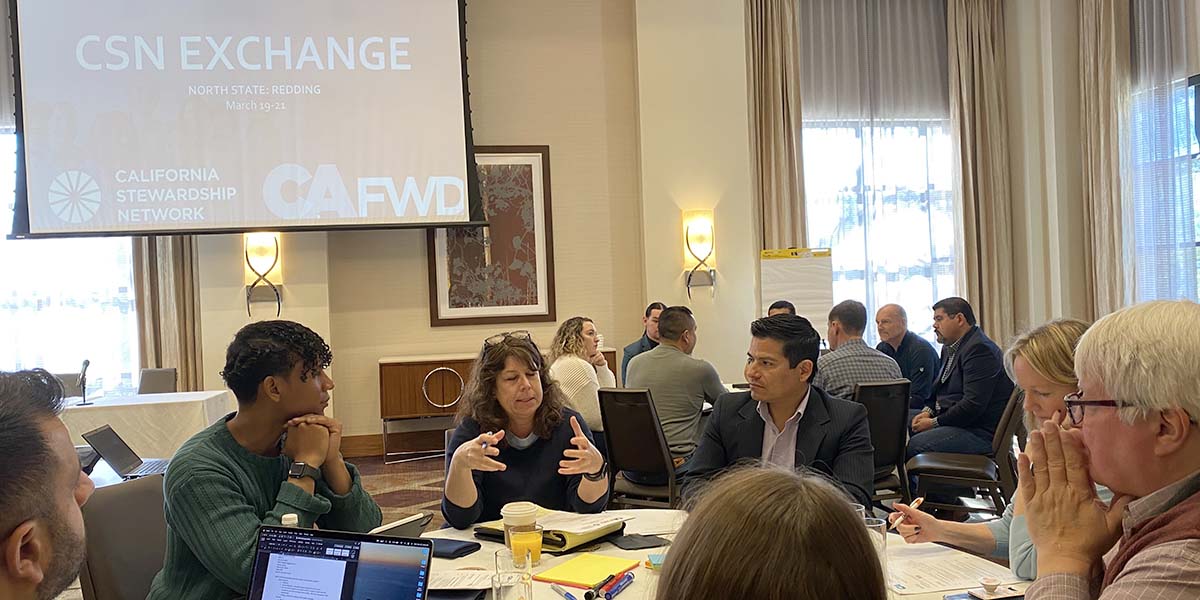
Regional co-host and Institute for the Future COO Rachel Hatch helped set the stage Monday, acknowledging the group had gathered together on Wintu lands and presenting a regional map of Indigenous groups.
“It is absolutely critical for regions to have a process for continuously scanning these signals of change–from 3D printed, fire-resistant homes to tribal, ancestral land return for conservation and cultural use–in order to be future-ready and prepared for action,” said Hatch. “Regional CSN Exchanges like this one provide the space to surface local innovations often happening on the edges, with long-term potential to disrupt and/or scale-up in size or geography.”
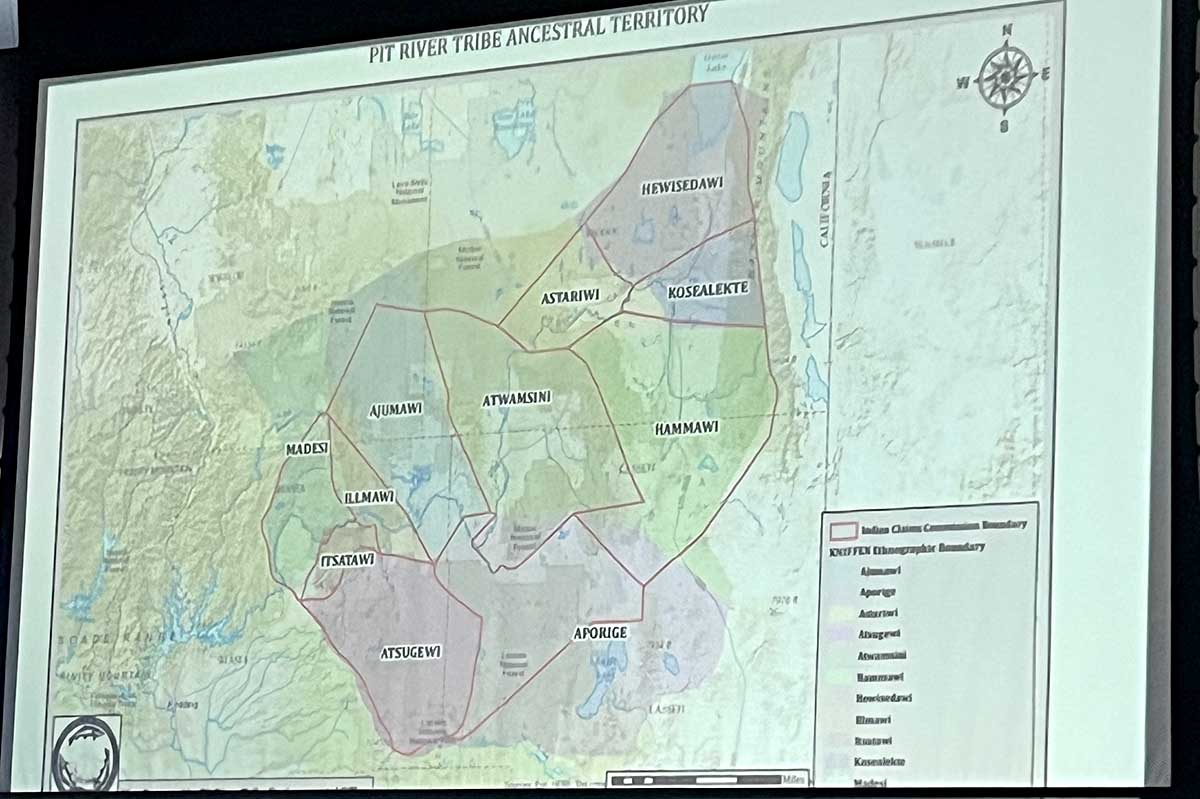 As part of regional presentations to the attendees, Gregory Feather Wolfin, Illmawi Council representative and environmental programs director for Pit River Tribe, shared the recent effort to preserve 1,826 acres of land returned to the Tribe, part of a conservation easement in partnership with Shasta Land Trust.
As part of regional presentations to the attendees, Gregory Feather Wolfin, Illmawi Council representative and environmental programs director for Pit River Tribe, shared the recent effort to preserve 1,826 acres of land returned to the Tribe, part of a conservation easement in partnership with Shasta Land Trust.
Talking about how Redding became the first city in California with a 3D printed house, Matthew Gile, Don Ajamian and Joe Chimenti — all from the construction company Emergent 3D — presented on the process to build the 1,200-square-foot house in Enterprise Community Park and the need to expand the use of the technology.
“Homelessness is one of the societal ills of our generation,” said Chimenti, director of community development for Emergent 3D. “This process is necessary because what we’re doing now isn’t working. We need more and safer housing.”
With the housing crisis and more wildfires squeezing supply and affordability, the builders offered 3D printing construction as an alternative way to tackle the cost of construction and the tight supply of construction workers.
Representatives from Shasta College gave attendees a look at how the school responded to a regional workforce need and built an apprenticeship program unique in the country. Becky Roe, director of forest health, and Angela Cordell, senior project coordinator of employer engagement, talked about the California Registered Apprenticeship Forest Training (CRAFT) program, which is designed and managed by industry, supported by education and registered with California’s Division of Apprenticeship Standards and Department of Industrial Relations.
In a region that many Californians may never spend much time in, the Exchange’s on-the-ground tour also provided attendees time to view first hand some pioneering efforts to promote a broad prosperity, like transit-oriented developments with affordable housing integrated into recent investments in Redding’s downtown and more.
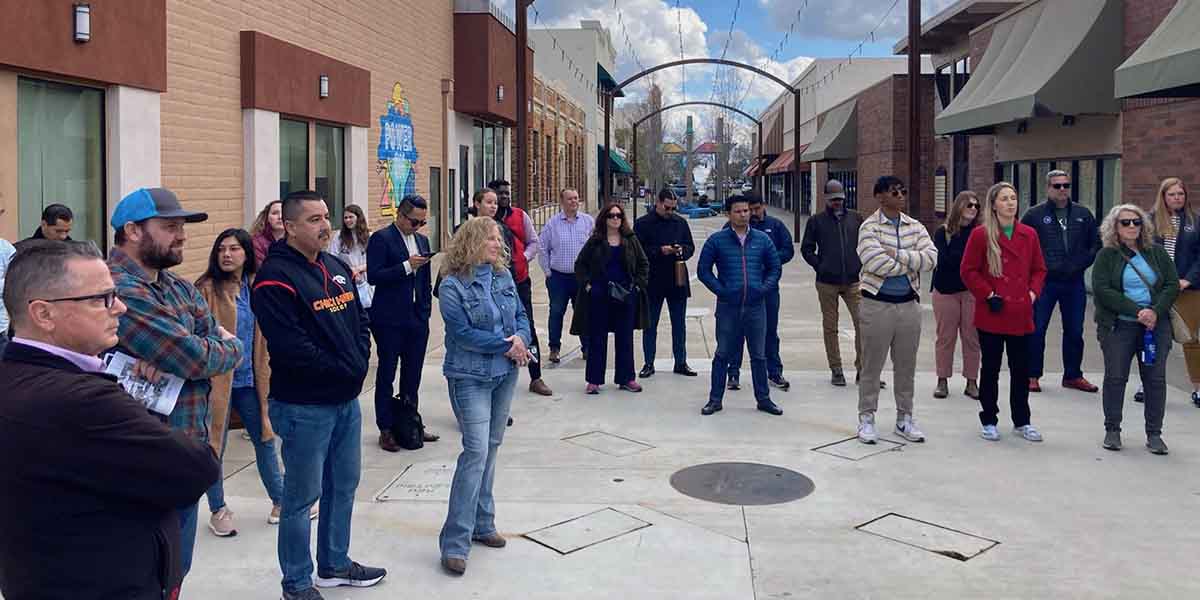
The group also heard about efforts to showcase art and culture in Redding, including a mural created in 2022, marking the Indigenous place name for the area of downtown Redding: “Elpom.” The mural was designed by conceptual artists Michelle Radcliff Garcia, a member of the Wintu Tribe, and her daughter Vanessa Scholfield (Wintu, Madesi Band of Pit River and Wylacki). Yurok master muralist Carl Avery oversaw and executed the painting of the mural.
In 2017, the city of Redding was also selected as one of 14 locations to be included in the California Cultural Districts program, which awarded the designation to well-defined geographic areas with a high concentration of cultural resources and activities.
“Artists are the greatest economic development allies,” said John Truitt, a tour presenter and director of Viva Downtown, a non-profit dedicated to enhancing the cultural, social and economic development of the downtown area.
And because the core of the Exchange is learning from and cooperating with partners in the CSN, attendees were also invited to share their challenges as regional leaders at nonprofits, small business support and economic development organizations and other problem-solving spaces.
“It’s inspiring to be in a room of people who see themselves as stewards,” said Nina Cheek, a fellow in CA FWD’s Becky Morgan Steward Leadership Program and a workforce innovation and public policy fellow at the Sonoma County Economic Development Agency. “We are relying on each other’s knowledge. It’s great just to learn from them by example.”
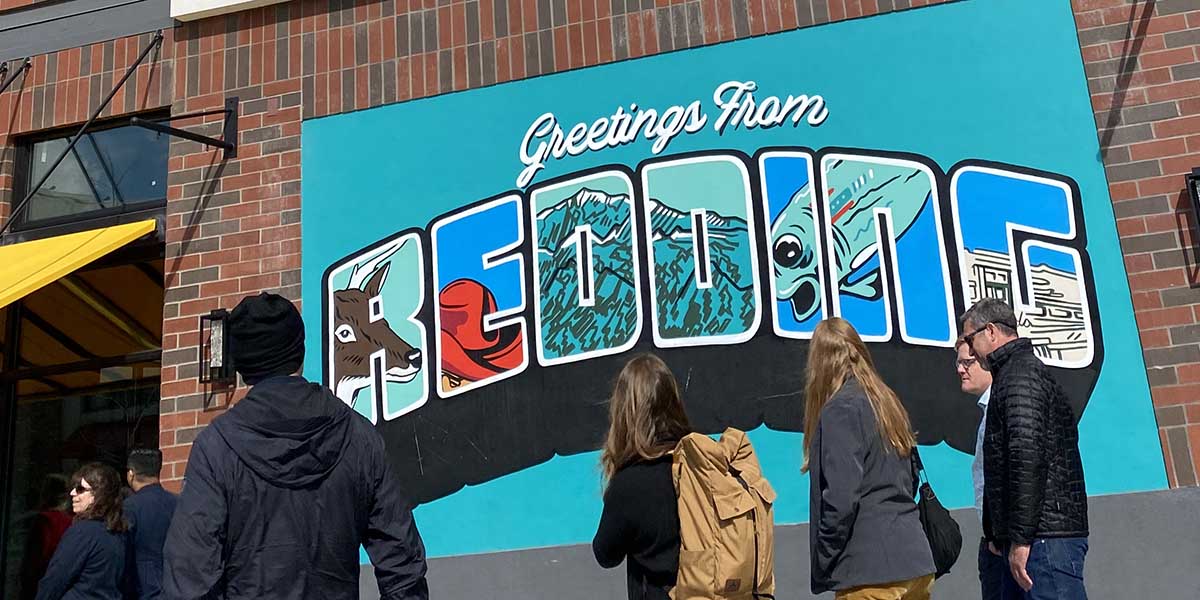
With almost 30 organizations represented throughout the state, the California Stewardship Network reflects the state’s diverse regions and participants are guided by a regions-up approach, a commitment to civic stewardship and sharing innovative solutions that can be scaled up.
“Being able to co-host the California Stewardship Network Exchange provided the opportunity to showcase culture, industry, and local projects that help drive economic development in our region,” said Moreno. “3CORE looks forward to strengthening our partnership with the CSN as a representative of the North State region.”
For more information about the Network, check out our CSN page.

